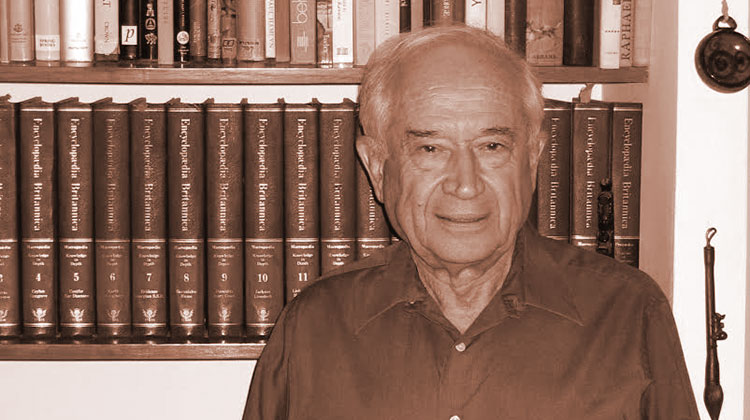A crowd of medical professionals and industry elites gathered in Downtown Denver Nov. 18 to hear from famed cannabis chemist, Dr. Raphael Mechoulam.
With a PhD in organic chemistry, Mechoulam spoke about the data he’s gathered from his years working on the endocannabinoid system — a naturally occurring system in the human body with receptors for cannabinoid compounds such as those found in the cannabis and hemp plants.
“Everything we know comes from his science,” said Martha Montemayor, founder of HCU education and lead organizer of the Marijuana for Medical Professionals conference. “Without him we would be nowhere in science, so even though it’s a chemist lecture, it’s the foundation of what we work and do with patients, the science behind how the medicines are made.”
One of the thousands of physiological effects of cannabinoids that Mechoulam’s attention is bone remodeling. He has high hopes for clinical trials in that area based on his research.
“It was known from published works that women in Mediterranean have less osteoporosis than those in the north,” he said. The medical community originally believed it was because of the consumption of olive oil, but no connection was found until they looked at the compound, oleoyl.
Oleoyl interactions reduced bone loss and has potential for bone growth, according to the chemist. Oleoyl is related to anandamide, an endogenous cannabinoid.
From the NIH, NIDA portal on ‘marijuana’:
Endogenous cannabinoids function as neurotransmitters because they send chemical messages between nerve cells (neurons) throughout the nervous system. They affect brain areas that sinfluence pleasure, memory, thinking, concentration, movement, coordination, and sensory and time perception. Because of this similarity, THC is able to attach to molecules called cannabinoid receptors on neurons in these brain areas and activate them, disrupting various mental and physical functions and causing the effects described earlier. The neural communication network that uses these cannabinoid neurotransmitters, known as the endocannabinoid system, plays a critical role in the nervous system’s normal functioning.
In his call to action, Mechoulam said, “I hope this compound or a related one will be made one day.”
Bone ailments and cannabinoids are currently being researched by Kalytera Therapeutics. Mechoulam works with very closely with them, as he is on their scientific advisory board. “One should expect this particular area will be researched thoroughly and hopefully we shall see a lot of interest in the compounds,” he said.
A lack of funding
The problem facing many cannabis scientists is the lack of funding available for a federally prohibited plant. A professional conference like this one brings together a mix of MD’s, biochemists, growers, and industry leaders — which really gets the information to all levels of the educational chain, observed Mara Bilibajkich, MD, CCFP. Based in Ontario, she traveled to Colorado to learn more about the status of cannabinoids in the research and development space and how she can best apply what’s already known to her family practice back home.
“The message I got was that Mechoulam is a guy working with data and he’s hoping — calling on others to expand on what he’s doing,” said Dr. Bilibajkich. “I see it as him telling everyone to wake up and take a look at this, because he sees the potential.”
The big picture take-away for the MD was his focus on cannabinoids and Alzheimers, seizures, and osteoporosis.
For now, it’s not a first line option, admits Dr. Bilibajkich, “But after trying medically accepted treatments, when nothing is working, I give it as an option.”
Dr. Mechoulam sees a bright future for cannabinoid medicine. “We can expect that these drugs will come in the next 10-15 years,” said Mechoulam.
